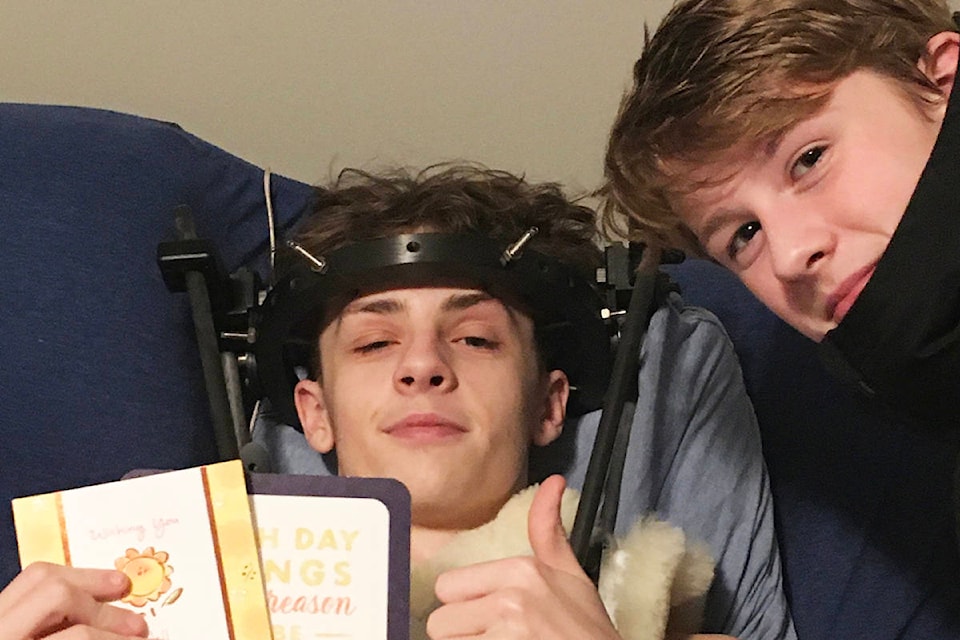What should have been a simple puck retrieval in his own end went horribly wrong for 16-year-old Ridge Meadows Rustlers hockey defenceman, Nathan Boatter.
The Midget A1 player broke his neck after being hit into the boards from behind in a Jan. 18 game versus Port Moody. Early indications lead his father to believe Nathan will make a full recovery, but Brent Boatter would like to get the word out to young players – and their coaches – that reckless play in the contact sport needs to stop.
Nathan was playing point on the power play in the game when the puck was iced by the opposing team. The young athlete went to retrieve the puck behind the goal line and when he got there was cross-checked from behind.
He was rushed to Ridge Meadows Hospital, where he went for an X-Ray and a CT scan and discovered he fractured the C1 and C2 cervical bones at the top of his neck.
From there, Nathan was transferred to BC Children’s Hospital in Vancouver where he underwent surgery to put a Halo vest on. The brace is used to immobilize and protect the cervical spine and neck after an accident. The procedure to put it in place required six screws be attached to Nathan’s skull.
So humbling such a classy group thank you for all your support. Nathan is so fortunate to be with such great people @RustlersHockey pic.twitter.com/viUYhYCgv1
— Brent Boatter (@BrentbBoatter) January 30, 2020
He will have to wear the “contraption” for eight weeks but has full mobility in his limbs, for which he and his family are extremely grateful.
Nathan’s father said the player did not have any mean intentions, whatsoever, and he insisted that the opposing player not be vilified.
“The play was not malicious in any way,” he said, “It wasn’t malicious but it was reckless.
“Our intention now is to bring awareness to young players to play hard but be aware of what they’re doing on the ice. It’s always important to continue to remind these kids to play safe.”
Brent pointed out the odds were quite high Nathan would end up a quadriplegic.
“At the end of the day he beat the odds and he’s very lucky. We just don’t want to see something like this happen again,” Dad added.
“Nathan has no hard feelings, and the Boatter family has no hard feelings, we just want people to play the game safe.”
Lynne Kiang, president of the Pacific Coast Amateur Hockey Association, said safety is a huge concern for all levels of hockey, and every year her association has conversations about the various ways it can be improved for the young players.
She pointed out an initiative that sees skaters wear a STOP patch on the back of their jerseys as a visual reminder to prospective checkers approaching a target from behind.
While it did not act as a deterrent in this instance, Kiang said it is part of a larger program that aims to make the game safer.
“There are checking clinics that the coaches have to take, where they are taught proper techniques for training the players, and therefore can ensure that the information makes its way back to the team level and that training is not just done at the higher levels,” she said.
“It starts right at the atom level because this is a game in which contact can occur at any level. Hitting or checking doesn’t start until bantam hockey, but just by the nature of the game, it’s quite possible that player are going to be in contact with each other, so making sure that the players can play the game safely is always a prime concern,” Kiang concluded.
It is still too early to tell whether Nathan will get back to playing the game at the high level he was before his injury.
“I think he’d like to play again,” Brent said, “And if he is healthy enough, he will.”
ronan.p.odoherty@blackpress.ca
Like us on Facebook and follow us on Twitter
